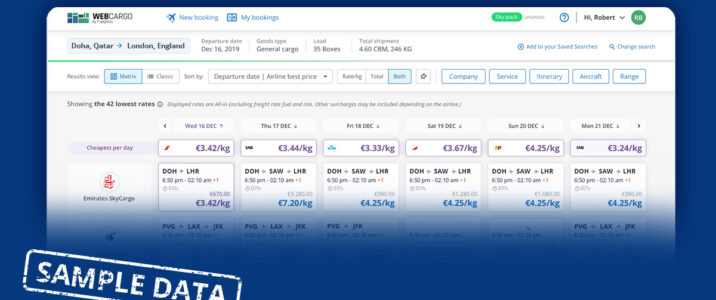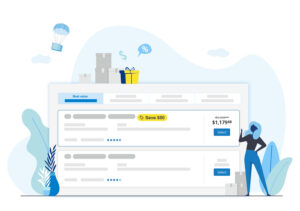Why Rate Management Systems Are Taking Center Stage in Forwarding Tech Stacks

Welcome to Part I of WebCargo’s series on how and why Rate Management Systems [RMSs] have become a vital aspect of a forwarder’s tech stack…and how tech’s evolution is changing their role.
Keep reading to discover the way they address the complexity and lag that slows sales and bookings between carriers and forwarders. More importantly, you’ll learn exactly how they enable forwarders to increase their win rate by letting them quote quicker, with more accurate pricing, automated processes and online sales.
Already familiar with the benefits RMSs bring to forwarders? Check out this guide to choosing the ultimate Rate Management System.
Closing the Deal: The (Expensive) Forwarder Challenge
Quoting to customers – and prospects – is among the tedious aspects of a forwarder’s job. While tech should help, the tech costs or internal rollout time required kept SMBs locked out of effective solutions. And this costs far more than most forwarders think.
Let’s take a step back.
The hassle for a pricing team begins the moment a prospect requests a freight quote. Coordinating between carriers, shippers, and suppliers, establishing pricing based on contract and spot rates, complex tariffs and surcharges to curate freight quotes is the first challenge. Then, every time a forwarder requests a rate, the cargo capacity run begins. If capacity isn’t available, that means another 3-4 calls, wasting time on a shipment that was likely urgent, given that it was meant to move by air. Unregulated pricing, delayed quotes, and manual entries often cause errors in the process, not to mention the increased manpower required to execute often repetitive and disorganized operations that result in a poor customer experience. Sound familiar?
The bottom line is that a forwarder’s bottom line suffers. Lost time means lost money, resources, and ultimately, a lower win rate. This, of course, is the hardest part – a forwarder can easily spend an hour on quoting a prospect, interacting with carriers, providing a final quote….only to lose out on the business to another forwarder. After all, most importers report using 3 or more forwarders on a regular basis.
What if there was a better way to help forwarders focus on selling, not data management. A way that would let them easily maintain a single
source of truth for rates from multiple sources, book faster and more reliably, all whilst ensuring the highest level of data accuracy and customer satisfaction?
There Is a Better Way.
This is exactly what a rate management system helps, providing one unified platform to manage rates, surcharges and quote to customers.
Rate Management Systems: Working Smarter, Not Harder
In plain English, an RMS is software that enables forwarders to manage freight quotes digitally, delivering better control and agility over the entire pricing process. Forwarders therefore use RMSs to maximize efficiency and ensure the highest level of customer satisfaction.
In short, software companies have attempted to alleviate pain points for forwarders with Rate Management Systems, but not all RMSs are equal.
Read Part II of this series, for a deep-dive into the benefits a comprehensive RMS provides, and how this helps forwarders efficiently manage the whirlpool of details needed to execute operations along increasingly sophisticated supply chains.

